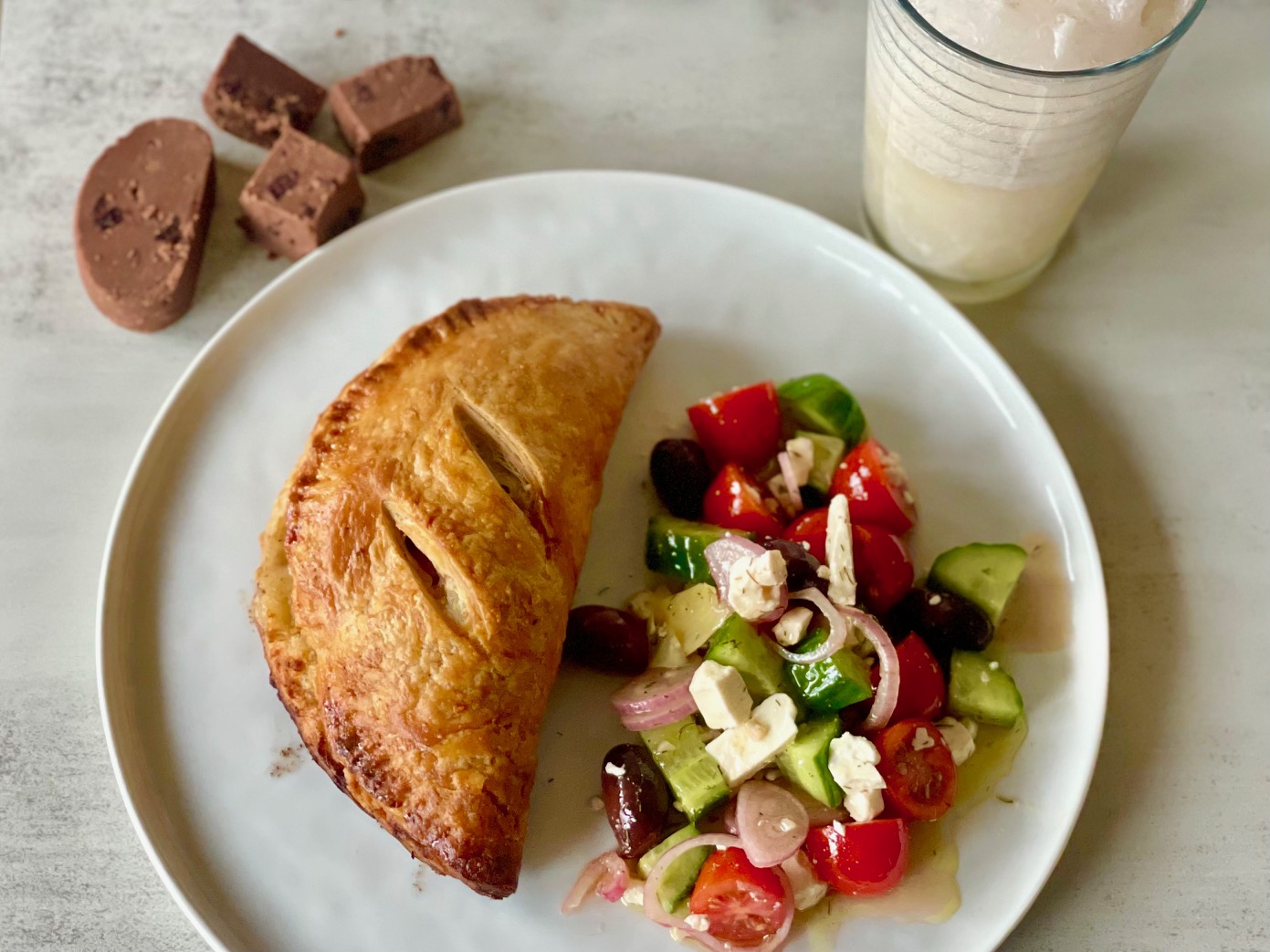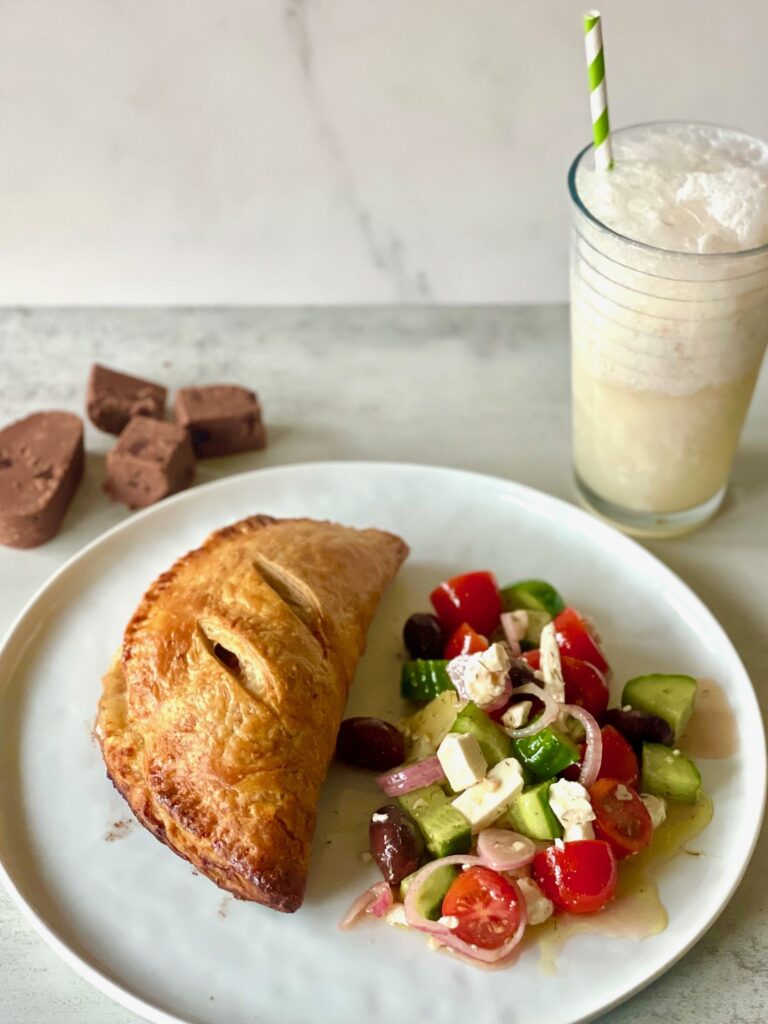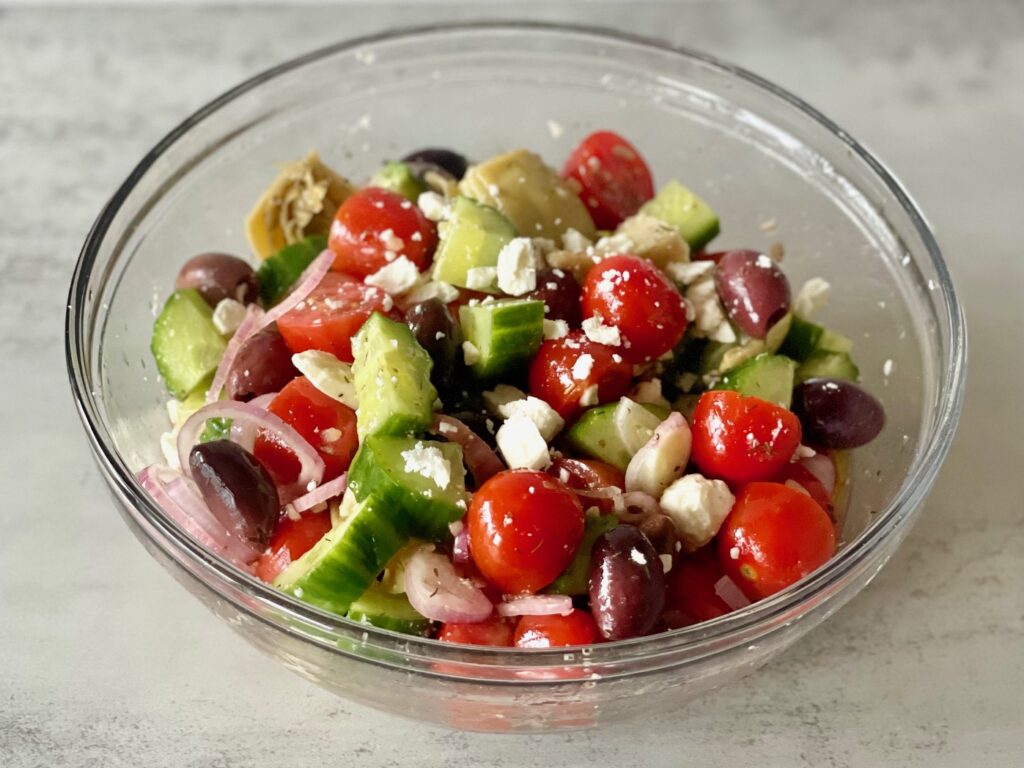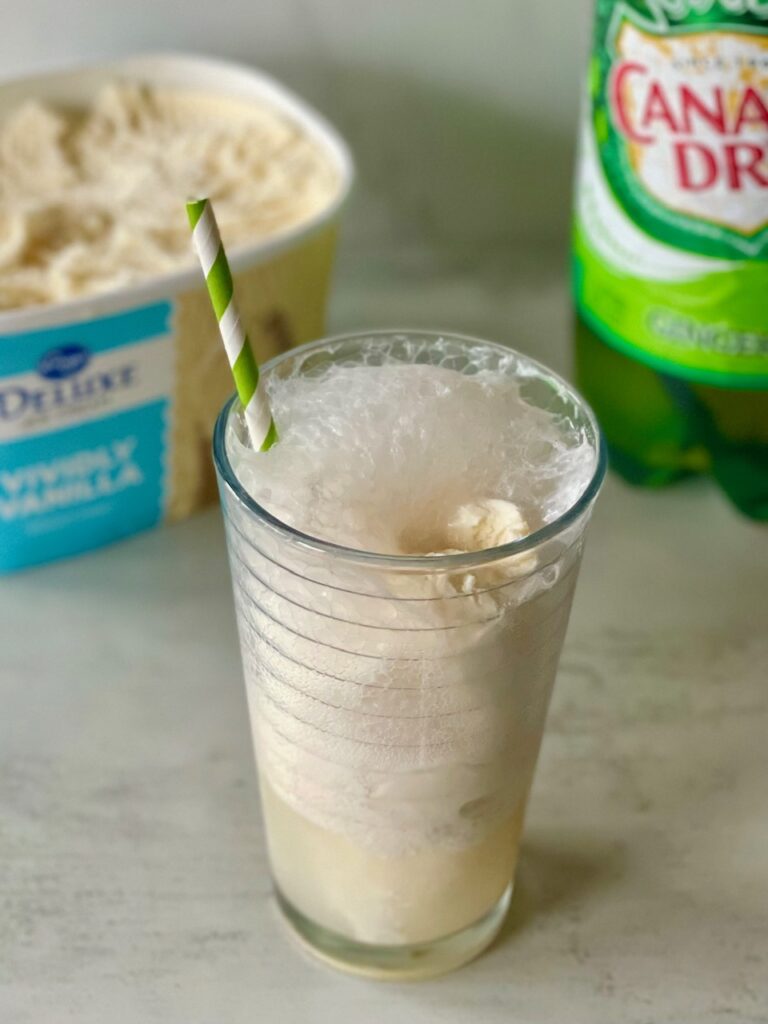Inspired by Michigan

THE MEAL
(Click on the links above to jump to that part of the post!)
Fun fact: Michigan is the only state that’s split into two separate pieces—the Upper Peninsula, and the Lower Peninsula (sometimes called the “Mitten”)—with a five-mile bridge connecting them across the lake.
MICHIGAN PASTIES
The Upper Peninsula of Michigan is more mountainous and has lots of iron and copper mines. In the 1840s, Cornish immigrants came from to work in those mines, having had lots of experience working tin mines in Cornwall. They brought with them handy meat pies that were easy to pack to work each day. The pasty (rhymes with “nasty”) quickly caught on and spread throughout all the Upper Peninsula.
Now, pasties are a big tourist draw in the Upper Peninsula, and there’s an official Pasty Day, May 24th.
Pasties are meant to be a meal all-in-one, with meat, veggies, and crust keeping workers full all day long. There are many different variations for pasties, but most agree that they need to have potatoes and onions, and rutabaga and carrot are common additions. I included all four veggies, using rutabaga for the first time in my life.
After the success I had making pierogi last time, I was confident that I could make these meat pies without much problem. But this was a very different kind of dough. I’m happy with how the crust turned out flavor- and texture-wise, but the edges were hard for me to keep together, and I made the mistake of crimping them instead of twisting them into the characteristic rope-like edge they’re supposed to have.
Oh well. They tasted great! They’re meant to be more filling than flavorful, so those in the Upper Peninsula (“Yoopers”) eat pasties with ketchup, which is what I ended up doing. But on their own they tasted almost like a chicken pot pie, but with beef and pork instead of chicken, if that makes any sense. 🙂 I really liked the mix of veggies, and it definitely did feel like an all-in-one meal. I could only eat about half of it before I was satisfied.
GREEK SALAD
So… I really goofed on this one. When I initially looked into foods to make for this state, I kept seeing Greek salad pop up, and I just assumed that a Greek salad is a Greek salad—I knew what went into one and I didn’t need to look into it any further.
WRONG. Apparently those in Detroit like their Greek salads not only with lettuce (which I probably should have guessed, it being Americanized), but also with beets in them. Something I’ve never heard of before and never would have thought to add.
So this isn’t really a Detroit-style Greek salad. I’m really sorry. I’ll try to do my homework more thoroughly before I start cooking next time.
The Detroit-style Greek salad hearkens back to the 1970s, when Greek immigrants started opening diners and gaining popularity in the area. They originally served salads the way I made it, but since Americans always associated salads with lettuce, they started adding iceberg and tossing everything together to make it more familiar. Since salads were always being touted as a health food, popular especially among women, Greek salads specifically caught on and became very common in all kinds of restaurants, even if other Greek foods were less well-known.
As for why there’s beets on it, the only hint I could find is that maybe they added pickled beets just because people associated anything pickled with Greek cuisine. I’m really not sure. I always associate beets with cob salad, if anything.
Again, I’m sorry that I didn’t realize I was making the wrong kind of Greek salad before I put this meal together, but honestly I probably would have chosen to leave out the lettuce and beet anyway. I love Greek salads. It took all my self-control not to eat the entire bowl in one sitting. But I’m not a fan of lettuce for the sake of lettuce. It’s just filler, only good as a vehicle for the actual good stuff—the toppings. I just leave it out as often as I can. As for pickled beets, I don’t dislike them, but they don’t seem like the kind of flavor I would want in this case.
The nice thing about salads, though, is that you can make them however you want, adding or removing whichever toppings you prefer. So whether you like it my way or the Detroit way, I hope you have a Greek salad in the near future.
BOSTON COOLER
First pasties from Cornwall, then salad from Greece, now a drink from Boston! Michigan, like so many of the United States, has an eclectic mix of cuisines from around the world.
This frothy ginger ale float actually originated in Detroit. There is a drink from Boston called the Boston Cooler, but it’s made with rum, lime, and soda water. When soda fountains were all the rage in the early 1900s, the term “Boston Cooler” was used for any chilled dessert drink, including what we now call a root beer float.
But in Detroit, Vernor’s ginger ale—one of the nation’s first soft drinks—began making Boston Coolers with vanilla ice cream and their famous ginger ale, and their version became so popular and best-known that all other versions of the Boston Cooler faded into obscurity.
I couldn’t find authentic Vernor’s ginger ale (despite being neighbors with Michigan now), but hey, Michigan is really close to Canada, so Canada Dry is close enough, right? 😉
Another random fun fact: the authentic kind of vanilla ice cream to use would be Stroh’s, which is the same brand that invented my childhood favorite, Superman ice cream. I can never find it anymore, but I LOVED that stuff as a kid.
I digress. This ginger ale float was pretty good! It tasted familiar to me, but I’m not sure why. Maybe I’ve had party punches similar to it, or maybe the taste is close to what happens when my grandpa puts 7-Up in eggnog at Christmas. I’m not sure. But it was yummy! Much lighter than a root beer float. If you want to get the real Detroit experience, let the ice cream melt a little, then stir it all up so that it’s more of a milkshake consistency!
CHOCOLATE-CHERRY FUDGE
While those in the Upper Peninsula go by “Yoopers,” and those on the Mitten side are sometimes called “Trolls,” the term they give tourists is “Fudgies” because of their preferred dessert.
Specifically, fudge is famous around Mackinac Island, an island between the Upper Peninsula and the Mitten. It became a summer resort destination in the late 1800s, and a family called the Murdicks opened a fudge store there in 1887 to sell sweets to tourists. The candy spread like wildfire, with many competing businesses popping up, and now, Mackinac Island produces an average of 10,000 pounds of fudge PER DAY!!
Mine didn’t turn out nearly as creamy as what you’d find on Mackinac Island, made on marble slabs by professional candy makers, but I was pretty happy with it! It melted in my mouth and was so rich and chocolatey!
I added dried cherries to mine A) because chocolate-cherry is one of my favorite combinations, and B) because Michigan is the nation’s leading producer of cherries. I had to include them in the meal somewhere!

So how do you think I did? Let me know in the comments if you have any suggestions for improvement, and be sure to tune in next time for my take on a meal inspired by my new home state, Indiana! Any guesses what I’ll be making for my state?
Thank you for reading!




